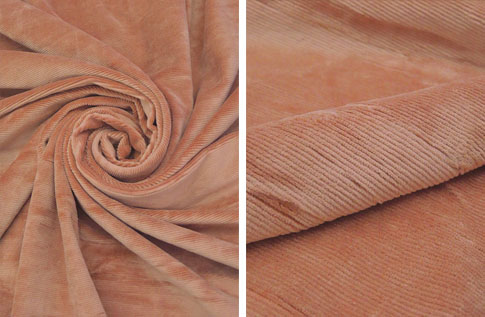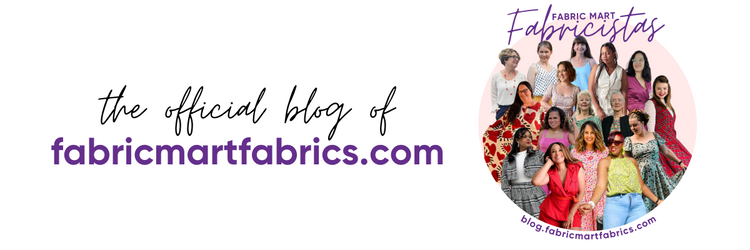Velvet is a luxurious fabric with a dense, fuzzy pile. The pile is created by adding an extra set of warp and weft yards in addition to the base yarns creating that thick pile. The pile is then cut creating a nap. A nap is the direction in which the fibers run when you brush your hand over the surface. The smooth feel of a nap tends to run down your body.
Let's take a look at the various types of velvet fabric.
Velvet (woven): A shiny, luxurious woven fabric with a short, dense nap. Woven velvets come in different weights from light drapey velvets, to more dense, mid-weights. Common contents of a woven velvet are 100% Polyester, Silk/Rayon Blend, Rayon/Acetate Blend, 100% Rayon.
Silk/Rayon blends and 100% Rayon velvets are usually lightweight and have a soft drape making the best for tops, dresses, skirts and flowy pants.
Mid-weight woven velvets are best for blazers, full dresses, vests and accessories.
.jpg) |
| Examples of velvet wovens |
Panne Velvet: Panne velvets have a distinct, elongated crushed look. The pile is pressed in one direction and flattened. Most commonly found on woven velvets.
 |
| Panne Velvet |
Stretch Velvet Knits are the knit version of a velvet. They have spandex/Lycra and can come in various weights. They are popular for tops, dresses, skirts and dancewear.
Crushed Velvet: The pile is pressed in different directions giving it a textured look. Most commonly found in knit construction, but can also be found in wovens.
 |
| Crushed Velvet Knit |
Burnout Velvets have a burnt out design on the surface of the velvet. The burned out area is sheer. Can be found on both knits and wovens.
 |
| Burnout Velvets - These photos show woven velvets. |
Velveteen is a woven fabric that is made from cotton. It has a very dense pile that has a more matte look than the other velvet types. It has a fuller drape and comes in medium to heavy weights making it best for blazers, jackets, skirts, pants and home decor. Velveteen can also have spandex/Lycra mixed with it to make the garment more comfortable.
 |
| Velveteen |
Velour is a more casual looking velvet. It has a soft, dry hand with a dull sheen. Napped pile with cut
loops. Usually cotton or cotton/poly blend. Can be mixed with spandex/lycra. Suitable for tops, hoodie, light jacket,
lounge pants, athleisure dress or skirt, loungewear, robe.
 |
| *This velour has ribs on it. Most velours do not have a rib weave. |
Sewing with Velvet
- Velvet can be difficult to sew with due to the napped surface.
- Be sure your pattern pieces are laid out in the same direction. Because velvet has a nap, you want to make sure the nap is going in the same direction on your garment. A smooth nap tend to go down the body.
- Velvet knits tend to curl so using pins or clips is very important! You might even want to consider hand basting depending on the project.
- Take care when sewing on velvet. Once you stitch on it, you don't want to remove the stitches. You will have a permanent mark in the nap.
- Take care when pressing. Press from the wrong side. Use steam above the surface and hand press. To preserve the pile on your velvet, take a scrap of the same velvet and lay it face up. Lay your pattern piece face down on the scrap velvet and press the wrong side.
While velvet is one of the more challenging fabrics to sew on, it can be very rewarding. You will create a beautiful, shimmery garment. Give it a try and let us know how it goes!
Tag us on Instagram @fabricmart and share your #fabricmartmake!
*This post was previously created in 2012 and was updated in December 2022.


.png)
Nice Post !! Really helped me
ReplyDeleteThis article answered some questions I've had about sewing velvet. Very informative.
ReplyDeleteGood info!
ReplyDelete